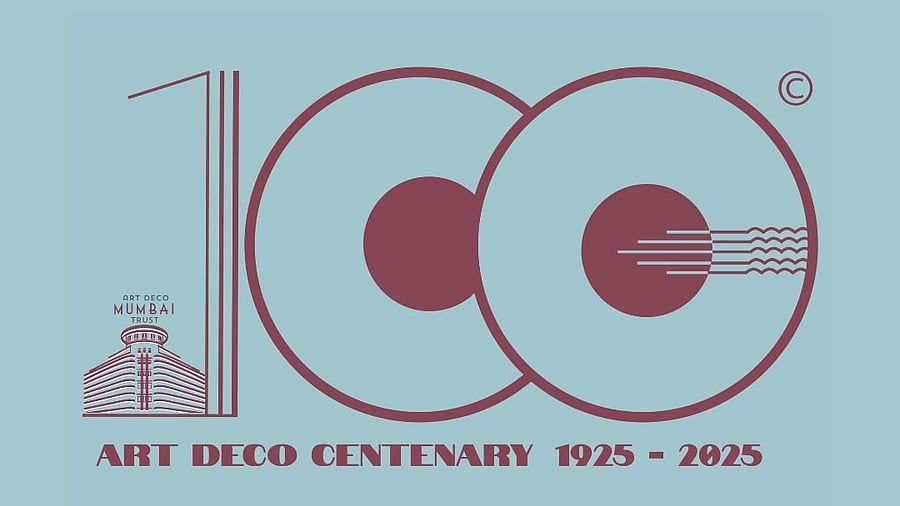
To commemorate this milestone, Art Deco Mumbai Trust has come out with a centenary-inspired logo.
Credit: X/@artdecomumbai
Mumbai: As one steps into 2025, the centenary celebrations for the Art Deco structures in Mumbai have begun.
The Art Deco of Bombay (now Mumbai) is recognised as the Victorian Gothic and Art Deco Ensembles of Bombay by the UNESCO World Heritage Site.
“2025 officially marks the centenary year of Art Deco. The style gained popularity from the 1925 Exposition Internationale des Arts Décoratifs et Industriels Modernes in Paris, a pivotal moment in the history of design in the modern world,” according to Art Deco Mumbai Trust.
To commemorate this milestone, Art Deco Mumbai Trust has come out with a centenary-inspired logo.
Each element in this logo has been designed to reflect the essence of Bombay’s Art Deco.
Having become a global trading centre, the city of Mumbai implemented an ambitious urban planning project in the second half of the 19th century.
It led to the construction of ensembles of public buildings bordering the Oval Maidan open space, first in the Victorian Neo-Gothic style and then, in the early 20th century, in the Art Deco idiom.
The Victorian ensemble includes Indian elements suited to the climate, including balconies and verandas.
“The Art Deco edifices, with their cinemas and residential buildings, blend Indian design with Art Deco imagery, creating a unique style that has been described as Indo-Deco.These two ensembles bear testimony to the phases of modernization that Mumbai has undergone in the course of the 19th and 20th centuries,” according to the UNESCO World Heritage Site.
There have been two waves of urban development of Mumbai in the 19th and 20th centuries transforming the city from a fortified trading outpost to the first city of India. The first expansion included the construction in the 1880s of a group of Victorian Gothic public buildings and the creation of the Oval Maidan.
The second expansion was the Backbay Reclamation Scheme in the early 20th century, which offered a new opportunity for Bombay to expand to the west with Art Deco residential, commercial and entertainment buildings and the creation of the Marine Drive sea front.
Today, the Oval Maidan offers a spectacular ensemble of Victorian Gothic buildings on its eastern side, and another impressive ensemble of Art Deco buildings on its western side as a testimony to the modernisation phases that Mumbai went through leading to a modern independent India in 1947.